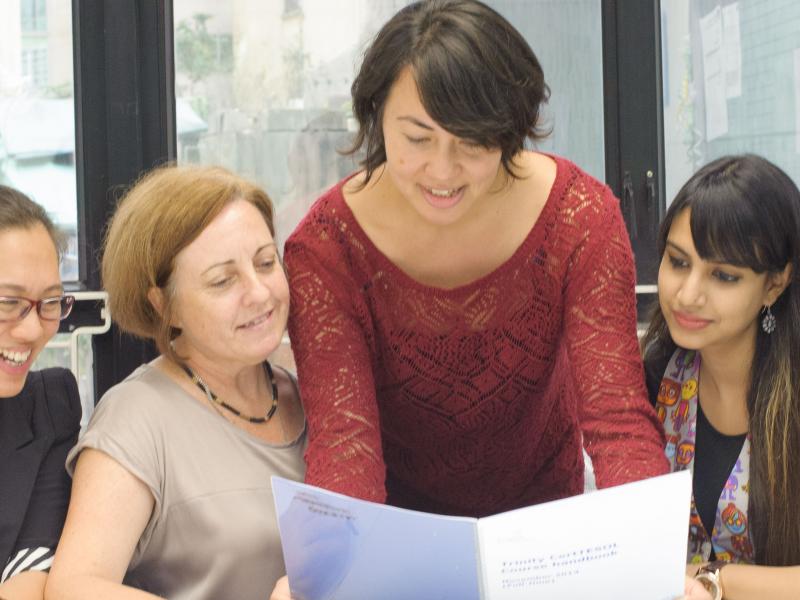28th May 2019
Teaching TEFL classes in Hong Kong can present a bit of a conundrum. In a culture that prioritises grammar instruction and accuracy over fluency, reading tasks are often seen as a series of questions to which the answers simply need to be copied straight from the text. However, reading comprehension texts for ESL learners create opportunities to integrate a variety of English sub-skills. For example, listening and speaking skills or exploiting a language or vocabulary aim. How a lesson is staged is crucial in its success as well as the tasks which support the aim. So let’s take a look at how to extract a sub-skill by effectively staging and planning a reading lesson, and how to create an effective task and exploit the material by using it to design several different reading activities.
First and foremost in any TEFL lesson, planning and staging are essential. Most inexperienced teachers find planning time-consuming and taxing. Not having a healthy repertoire of English teaching activities requires more time to adapt/create material hence increasing planning time. Below is a typical structure to follow when planning a successful reading lesson along with some useful ideas and activities to support each stage.
Basic structure of a TEFL reading lesson and its stages
There are varieties of lesson structures for an TEFL plan. This particular structure and staging supports both reading comprehension and listening lesson plans.
1. Set the context
2. Pre-teach vocabulary
3. Gist reading/listening
4. Detail reading/listening
5. A written or spoken response to the text/listening
1) Setting the context
Perhaps the easiest of stages, but a good strong context will set your stage, appeal to different learning styles (visual, audio, or kinesthetic), and activate the learner’s schemata.
Ask yourself: What topic is the text about?
To establish this in your lesson, try some of the following reading activities:
Activity one: Learners work in pairs and discuss appropriate questions which relate to the topic. This could be elicited by using a photo, a short video clip, or a famous quote.
Activity two: Watch a video without sound, after learners watch they then make predictions about the contents. Next they discuss their predictions in pairs and re-watch video to see if their ideas were correct.
2) Pre-Teaching Vocabulary
Pre-teaching vocabulary provides learners an opportunity to address any language which may prevent comprehension of the text and interfere with the practice and development of reading strategies. It also lends way to focus on different aspects of pronunciation, such as difficult phonemes, primary stress, and syllables.
Ask yourself: Are there any words in the text that the students need to know in order to complete the following comprehension activities?
Once you have identified a list of potential words, try some of these activities:
Activity one: Learners match definition to the new words, or pictures. Next, learners are divided in to two groups (e.g. A or B), allocate a number of vocabulary words to each group. Learners then write clues for the words, design a crossword puzzle and then swap. Learners then ask each other their written clues and their partner must guess the correct word.
Of course, you don’t have to pre-teach any words – learners may also benefit from learning to guess the meaning of unfamiliar words from the surrounding contextual clues (other words and phrases around them). This would mean you add a stage after the students read for detail (later in the lesson), and helps build vocabulary through synonym work and understanding unfamiliar language through context. This reading activity might look like this…
Guessing vocabulary from context: (once the students have read for detailed comprehension) Give students a list of synonyms matching target words from your text. Students read the text and match them to the synonyms on your list. For more advanced levels, have students choose their own words, and write synonyms for their partners to guess.
3) Reading for Gist
Gist establishes the general meaning of a text by practicing skim-reading (a subskill of reading). It is a necessary stage as it helps reinforce the context and enables the learner to make predictions about the reading text and topic. It usually is the first contact with the text and establishes what the learner already knows without confronting them with what they don’t know.
Ask yourself: What is the general idea of the text? Who are the people in the text, or what topic, idea, style or opinion is the text presenting?
Now try some of these activities:
Activity one: Very simply create some headings for the paragraphs and have learners match them in pairs. Get them to check their answers together and justify their reasons. This focuses students on the global meaning of each section of the text.
Activities two: Read the statements below and check if they’re true or false. Have learners check answers in pairs, and then have them justify the reasons they were true or false.
Activity Three: Give students some pictures relating to the text, and have them make predictions about the text then read to check if their predictions were correct. Have groups justify their reasons.
4) Reading for detail
When reading for detail, learners should not read every word, but rather the whole sentence to extract the meaning from the context. It is not necessary to know the exact meaning, as even native English speakers infer meaning. Doing so rids dependency on dictionaries and places importance on reading in chunks rather than word for word.
Ask yourself: What are the finer details, or subtle meanings that students need to understand from the text?
Now design tasks and questions so that students are forced to read the text to find this information:
Activity one: The teacher scrambles the text and the learners reorganize the text. After checking for correct organization have the learners write five questions which they can ask about the text to fellow classmates. Doing so will enable learners to practice writing questions, asking and answering, and noting-taking skills by recording their partner’s answers.
Activity two: Section a text into two or three parts. Divide the class in to three groups. Have questions for each section of the text. Learners answer their designated questions. Next have learners think of some questions to retrieve the missing information from the other text, and then repair them. Lastly, learners ask each other to find missing information about the text.
5) Response to the text
Responding to the text gives an opportunity for the learner to practice productions skills. It also offers the learner a chance to think abstractly about the topic and personalize it. Doing so maximizes opportunities for speaking and listening, and allows the teacher to monitor, note errors, prioritize them to address later.
Ask yourself: What would I want to talk to my friends about after I read this text? How can I encourage students to apply the theme/topic to their own experiences?
Now set the students up with one of the following activities:
Activity one: Learners write a short summary of the text no more than 100 words. Then have learners swap and identify any differences in the details they chose to include.
Activity two: Learners write a review of a film/book/event etc. following the appropriate conventions, such as register, vocabulary structure.
Activity three: Students write questions which they would like to ask fellow classmates. Students ask each other and discuss. The teacher can feed in language to agree or disagree, or expressing opinions. This is an opportunity to address intonation, speaking strategies, or grammatical issues.
Activity four: Learners are given different situations and prepare a short dialogue. Next, act out in pairs or groups. The teacher monitors, notes errors, feeds in any needed language, and focuses on a speaking strategy.
So now it's over to you:
- Have you tried any of these activities in your own lessons?
- Which ones would you like to try?
- Have you got any interactive, communicative ways of exploiting reading texts?
Considering a Trinity CertTESOL qualification? The introductory module of the CertTESOL course is now available as a standalone fully online course – the TESOL Starter course.



